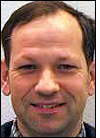Nov 03, 2006Dutch flower-auction company FloraHolland sells flowers to about 4,000 horticultural traders daily at its Naaldwijk facility. Now the worldwide cooperative of flower and plant growers, which this week merged with global horticultural vendor Bloemenveiling Aalsmeer, is embarking on an RFID project to move flowers more efficiently, and to gain more data about its products and their movements as they pass through the facility.
It's a tall order—the Naaldwijk facility, one of the largest commercial warehouses in Europe, is the size of 100 soccer fields. Trucks begin arriving at the 1-million-square-foot facility at 4 a.m. every day, where employees use tractors, trolleys and bicycles to handle incoming shipments. Time is of the essence, as flowers must be on their way to buyers within a few hours of their arrival.
For the past four years, FloraHolland has utilized an RFID system that includes several loop antennas embedded in the floor to monitor when tractors pulling trolleys of flowers arrive at the auction floor. These antennas interrogate the Texas Instruments ISO 18000 134.2 KHz passive tag embedded in each passing trolley. The cooperative brings traders daily onto its auction floor, and more than 100,000 trolleys of flowers are moved from one location to another for selling and shipping. The buyers subsequently sell the product to retailers throughout the world. Data about the trolley number and the products on it are displayed on an LED screen on the auction floor, alerting buyers as to which products are heading to auction.
One problem with this initial RFID implementation was that for the interrogators to successfully read the trolley's RFID tags, drivers had to pass directly over the antennas, in single file, slowing traffic. The congestion was complicated by the fact that one motorized tractor can pull more than eight trolleys, each with its own RFID number. FloraHolland needed an RFID system able to capture reads on each RFID tag passing through the existing 30 choke points quickly, where multiple trains of tractors and trolleys move in multiple directions. They also needed to add more choke-point readers in other areas of heavy traffic.
For its new project, FloraHolland is installing a real-time RFID system provided by systems integrator Atos Origin and RFID software provider, GlobeRanger. The Atos/GlobeRanger solution includes reader antennas installed in the floor at 67 choke points around the facility. The system tracks where the flowers have been in a specific location, and for how long. According to Wilrie Multem, FloraHolland's RFID coordinator and a member of the RFID middleware selection team, the antennas are better able to read the tags of the trolleys when the trains are moving freely over the grid of loops.
With the new system in place, FloraHolland employees will check in the flowers delivered each morning using a touch-screen computer at the dock door, then give the flowers a grade rating based on freshness and quality. They will also manually input the ID number of the RFID tag on the trolley on which the flowers will be loaded. Train drivers wear ID badges with TI's 134.2 KHz passive RFID tags. As a driver passes from one location to another, readers deployed around the facility will capture the driver and trolley number, says Bob DiLoreto, vice president of business development for GlobeRanger. The system will then send that data to the FloraHolland database.
FloraHolland is in the processing of installing 67 readers from DLTech RFID Solutions at choke points on the auction floor, and is also acquiring 250 handheld readers. The company expects installation to be completed by the end of the first quarter of 2007.
The new solution will gather more real-time tracking and tracing information between the start and end points of the delivery process, says Multem, with the use of iMotion software collecting and interpreting data specific to the time every trolley passes over each choke point. It will determine the direction of trolleys and their drivers by tracking where the previous RFID read took place. This feature will allow FloraHolland and its customers to know how long the flowers remained in any specific part of the facility—such as in cold storage, at a dock door or waiting to enter the auction floor—thereby guaranteeing customers as to the freshness of the flowers.
"This data enables improvement of internal processes by real time-correction," Multem says. Such real-time correction, for instance, might involve alerting employees when a trolley is delayed outside of cold storage. It also provides the platform for analysis of data for improvements in the logistic process. He adds that it will eventually enable an electronic "processing history" of the flowers, to confirm they have been handled properly to potential buyers.
Down the line, Multem says, "FloraHolland has a number of other smaller sites which could be also part of a rollout in the future."



